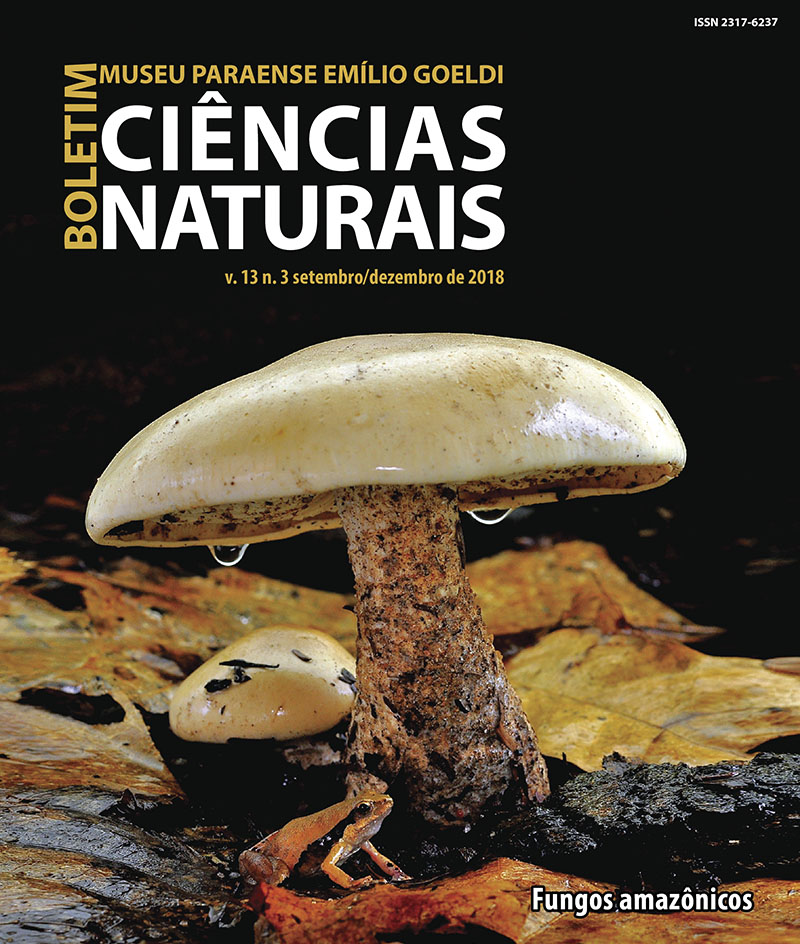Electrical resistivity around the sanitary landfill in Boa Vista, Roraima, Brazil: implications for environmental constraints
DOI:
https://doi.org/10.46357/bcnaturais.v13i3.346Keywords:
Sanitary landfil, Contamination, Vertical electrical sounding, Boa Vista CityAbstract
The electrical resistivity curves (ρa) defined for the Boa Vista sanitary landfill consisted of two geoelectric groups. The first one is depicted as four zones with graded resistivity values that are related to the lithology: sand-sized grain (30,000 Ω.m < ρa < 10,000 Ω.m), muddy sand-sized grain (10,000 < ρa < 5,000 Ω.m), sandy mud-sized grain (5,000 Ω.m < ρa < 1,000 Ω.m), and mud-sized grain (1,000 Ω.m < ρa < 700 Ω.m). The second group is subdivided: 2A (36 Ω.m < ρa < 250 Ω.m) which presents conductive anomalies attributed to a contamination plume of the county garbage disposal area; 2B (250 Ω.m < ρa < 500 Ω.m) which is related to the migration of the contamination plume and is concentrated in the NW, N, and NE of the study area while the contaminants tend to migrate toward the NE portion. There, the risk is intensified because the Auaí Grande creek is located in this portion. The last group 2C is the borderline for the first two groups 2A and 2B. In the NE portion, group 2C presents resistivity values ranging from 2,000 Ω.m to 7,000 Ω.m, acting as natural trapping for the contaminants.
Downloads
Published
Issue
Section
License
Publication means fully assigning and transferring all copyrights of the manuscript to the journal. The Liability Statement and
Assignment of Copyrights will be enclosed with the notice of acceptance. All the authors must sign the document and return it to the journal.








